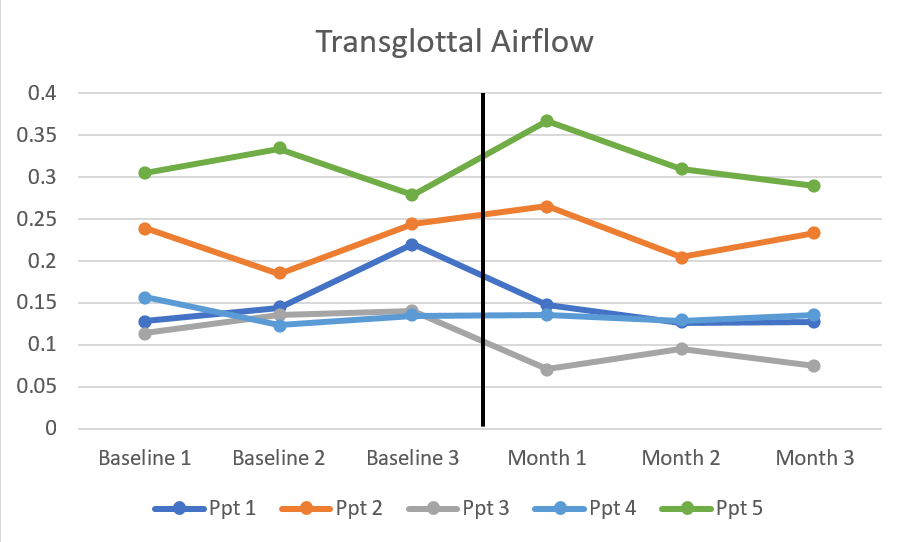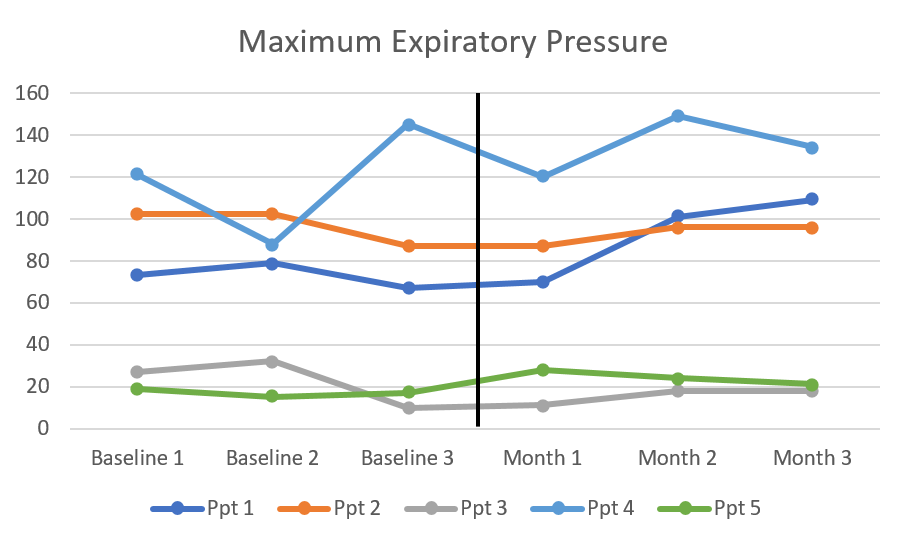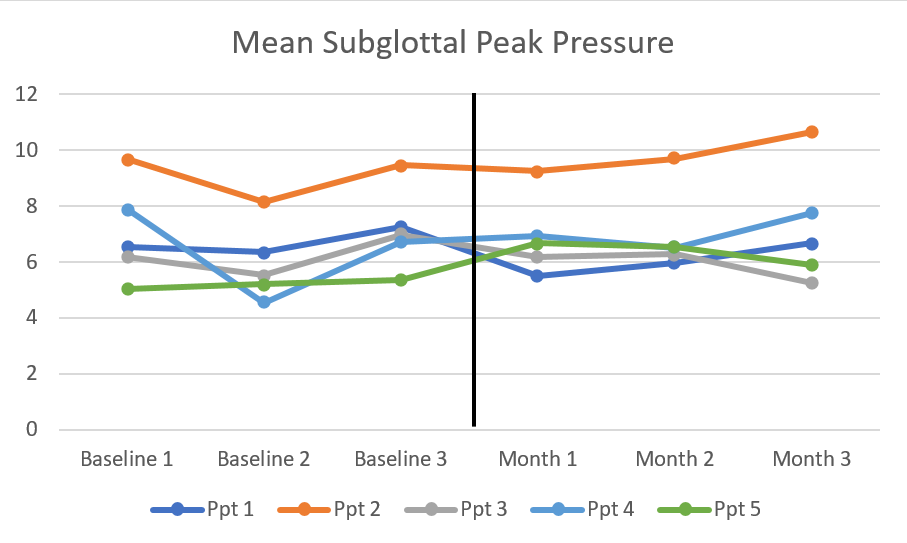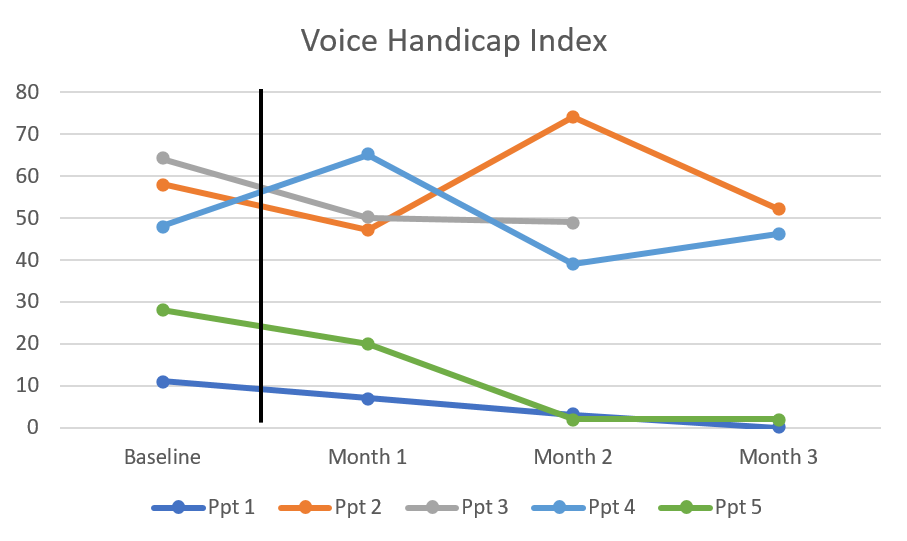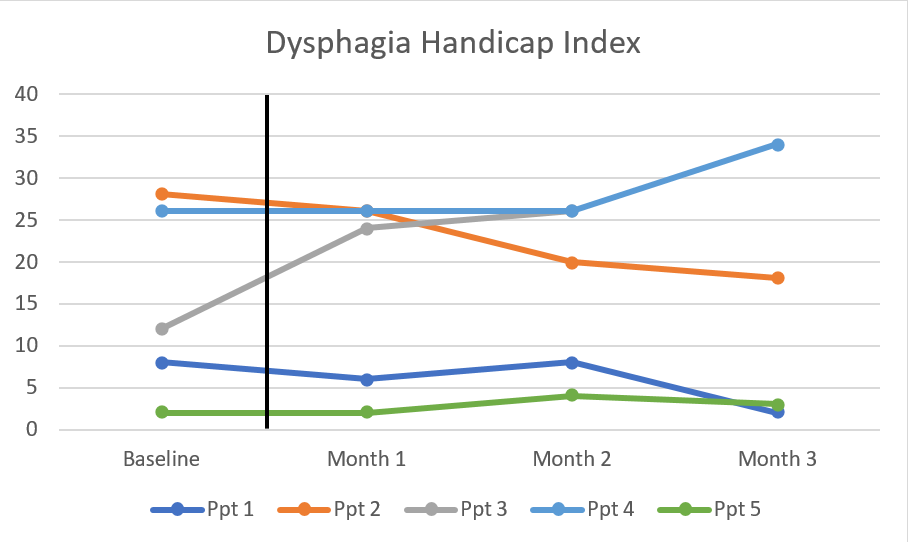Objective: This project aimed to determine the effect of a boxing exercise program on aerodynamic measures related to voice production (maximum expiratory pressure, MEP; transglottal airflow; mean subglottal peak pressure, SPP) and on self-perceived handicap of laryngeal function (Voice Handicap Index, VHI; Dysphagia Handicap Index, DHI) in people with Parkinson’s Disease (PWPD).
Background: Non-contact boxing programs for PWPD are popular and community-based approaches that have not been extensively researched. The available literature suggests PWPD improve on balance, strength, functional mobility, and quality of life after the program. However, it is unclear if these motor benefits also extend to behaviors related to voice and swallowing function.
Method: A single case study design was employed. Nine PWPD without cognitive impairment were recruited. Three baseline measurements were taken. For each of these research visits, we collected the MEP, mean transglottal airflow during voicing of an all-voiced sentence (“We were away a year ago”), and mean SPP. The Voice Handicap Index (VHI) and Dysphagia Handicap Index (DHI) were administered. Post-baseline, participants started the boxing intervention which consisted of biweekly boxing sessions across 12 months. Participants were followed-up at the 1, 2, 3, 6, 9, and 12-month time points. The same measures as the baseline session were utilized for follow-up visits.
Results: Data collection is still in progress. At the time of the conference, 9-month data will be available for 5 of the participants, and 6-month data for 4 of the participants. The current preliminary results are based on the 3-month data of the initial 5 participants. Visual analysis of the transglottal airflow and SPP data revealed no patterns at the 3-month time point. For the MEP data, 1 patient showed increased MEP after the start of the boxing classes, with no patterns detectable for the other participants. Slight decreases were seen in the VHI and DHI scores. However, further data collection is needed to confirm these patterns.
Conclusion: At the 3-month point of a non-contact boxing program, PWPD show slight improvement in the self-perceived vocal and swallowing handicap. It remains unclear if these self-perceived changes are also reflected in the quantitative measures. Continued data collection will provide more insights.
To cite this abstract in AMA style:
Z. Thijs, C. Watts. The Effect of a Boxing Exercise Program on Laryngeal Function in People with Parkinson’s Disease [abstract]. Mov Disord. 2022; 37 (suppl 2). https://www.mdsabstracts.org/abstract/the-effect-of-a-boxing-exercise-program-on-laryngeal-function-in-people-with-parkinsons-disease/. Accessed April 21, 2025.« Back to 2022 International Congress
MDS Abstracts - https://www.mdsabstracts.org/abstract/the-effect-of-a-boxing-exercise-program-on-laryngeal-function-in-people-with-parkinsons-disease/

